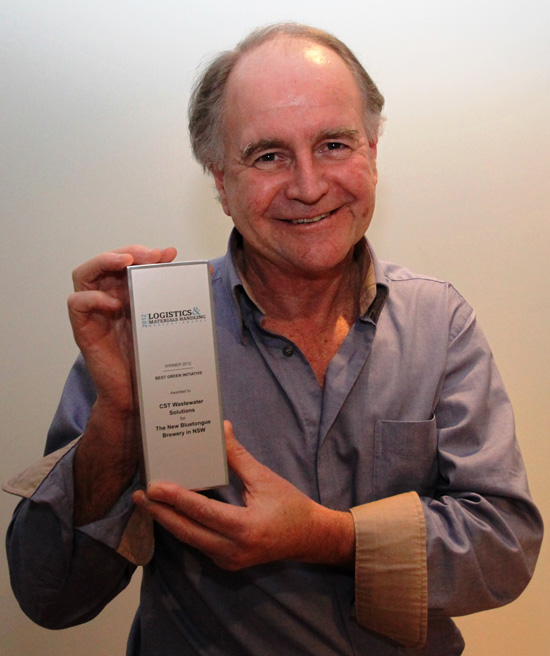An Australian brewery’s waste water recovery plant, designed to achieve world’s best practice standards of water reuse and green energy generation, has won a Mercury National Materials Handling Award for Best Green Initiative.
The Bluetongue Brewery in NSW – engineered by Australia’s CST Wastewater Solutions in partnership with Global Water Engineering – has achieved all the high environmental performance targets set by the partnership that built it, Pacific Beverages, a SABMiller/Coca Cola Amatil joint venture.
Pacific Beverages designed the plant to ultimately have an annual capacity of 1.5 million hectolitres, while targeting a reduction in water usage to 2.2l / 1 litres of beer produced for the Australian market, which has one of the world’s top 10 annual beer consumption levels, at 83 litres a head.
The plant’s water recovery plant exceeded its designers’ high expectations in its first year of service while also providing valuable biogas for boiler heating, reducing its dependence on fossil fuels and ultimately cutting overall energy needs by 15 per cent.
The plant – featuring GWE anaerobic technology widely applicable to the food and beverage industry – received its Mercury Award in September 2012 from Logistics Magazine of Reed Business information, publisher of more than 100 business magazines and e-magazines globally.
CST Wastewater Solutions Managing Director Mr Michael Bambridge said the award further demonstrated the enormous potential of new-generation technologies to transform waste water byproducts from an industrial disposal expense into green energy profits.
“Australia is the world’s driest inhabited continent, so water conservation is doubly important here. And while solar power, wind power and tidal power grab daily headlines worldwide, anaerobic waste water digestion technologies are quietly but effectively responding to the need for industry to break free now from the cost and pollution of fossil fuels – and the financial penalties such as carbon taxes they face Down Under.
“Any factory with a biological waste stream or wastewater with high COD (Chemical Oxygen Demand) can easily use this technology to generate energy. Some companies making the investment have achieved payback within a year. Most typically achieve it within two years,” say Mr Bambridge.
